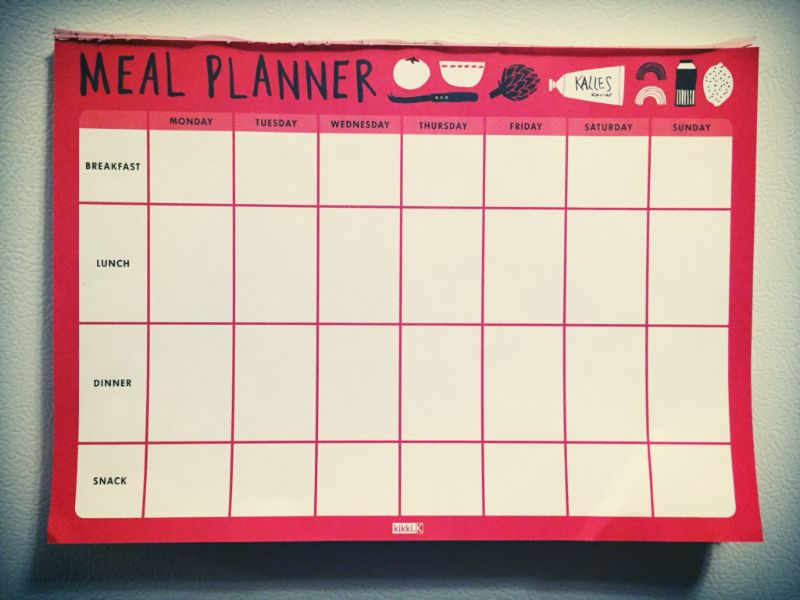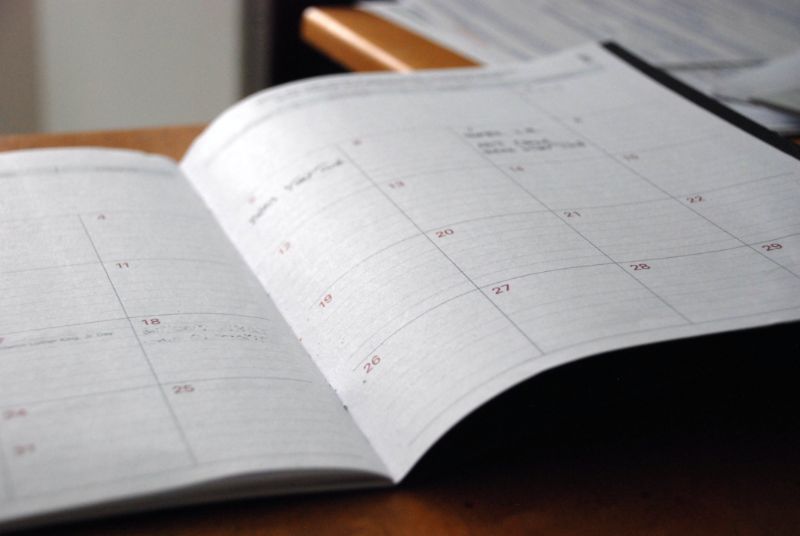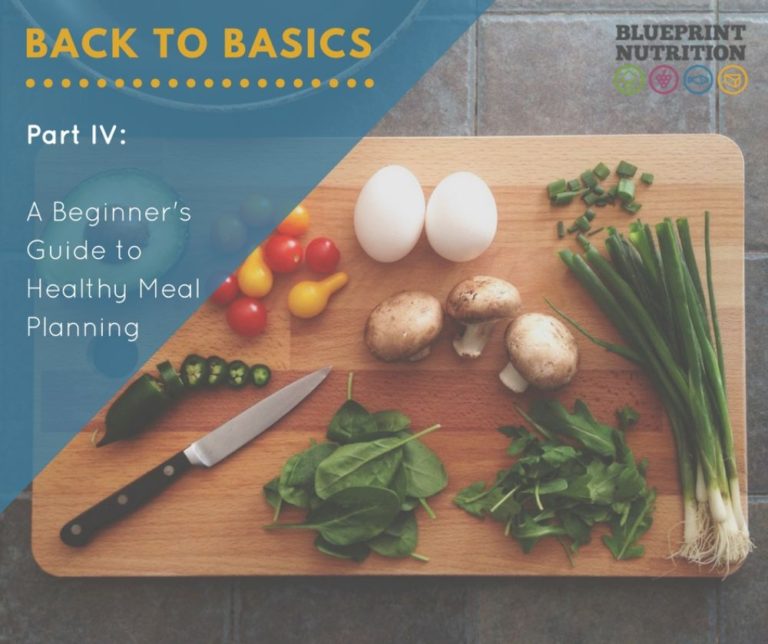At last! We have arrived! This is the last post of my four-part blog series on Getting Back to the Basics. Since they always say to “save the best for last” I thought I would follow through on that wisdom and save, what I would consider to be the most important aspect of healthy eating, for last, which is meal planning.
As aways, I am going to be totally honest in this post and call a spade a spade.
Meal planning isn’t very exciting.
And it’s certainly not very trendy like talking about turmeric or Buddha bowls seem to be these days.
In fact, most would agree that it is a downright dreaded task.
However, having said all of that, meal planning is far more important than eating turmeric or Buddha bowls will ever be because a person who plans their meals in advance sets themselves up for healthy choices all day/week/month long, has far lower levels of mealtime stress and does all of this while saving money! This one simple task can absolutely transform your life in the kitchen from sheer chaos to control and calmness.
It doesn’t matter if you are single or married, have 5 kids or no kids, are 21 or 71, meal planning can make you a healthier, happier, and more organized person.
The cost savings aspect alone should sell you on meal planning because who doesn’t like to save money? Admit it, we’ve all gone grocery shopping without a plan or a list and then returned home and realized that we don’t have much on hand to actually make a meal with and end up throwing away much of the fresh food later that week because it went bad … all because we didn’t have a plan.
Benjamin Franklin put it best when he said:
“By failing to prepare you are preparing to fail”.
The concept of meal planning is a simple one. It means having a recorded plan in place so that you have the right ingredients on hand to make a healthy meal or meals each day. It keeps everyone in your household in the loop as well so that you can implement the “first one home starts cooking” rule.
But it can be time consuming and frustrating if you don’t know what to plan! And it’s repetitive. Haven’t we all struggled at times to come up with new healthy meal ideas? There are only so many “Tuna Casserole Tuesdays” that one can handle.
However, I would argue that it is less about WHAT you are planning (for the time being anyways) and is MORE about actually PLANNING and having the right foods on hand to put together a meal. In the end, we are trying to avoid what I call the “5-TOT” (5 o’clock Take Out Temptation) because we have all been there far too many times, especially on a Friday!
If you’re nodding your head and saying, “Yup, I agree. Ok. I’m gonna start meal planning,” but are wondering, how do I start? Read on for 5 simple steps to get you meal planning more effectively and efficiently.
5 simple steps to take when meal planning:
1) Find a recording tool that works well for you.
By this I mean find something that you can use to visually plan out meals for the week. It could be as simple as a calendar, an erasable whiteboard, a piece of paper or a free printable version from the internet. I use this great one that was imported for me from Australia! True story! My sister who lives in Sydney picked this up for me as a gift. I love it because of the magnet on the back and I can just rip off a new sheet when I need to. I adapt to fit my planning needs since I only plan our suppers right now. (The nice thing about paper vs. a whiteboard is that you can save your meal plans from week to week.)

2) Figure out what’s going on in your life first.
The activities going on in your household will influence what you cook and the amount of time you have to prep before supper. Gone all day? Use a slow cooker. Home all day? Try a new recipe or something a bit more involved. Swimming lessons right over the supper hour? Pack a picnic supper at the pool. If you find that you are out of the house every night of the week right up until suppertime, think about prepping ingredients in advance. I do this often to keep us on track. For example, if I have planned whole wheat pita pizzas, I will have the cheese grated, the peppers chopped, the pineapple diced and the ham cubed so that as soon as we get home, the toppings can be thrown on the pitas and the whole process takes no longer than 10 minutes.

3) Start with planning one meal each day.
You don’t need to plan every single meal. My suggestion is to start with supper because that can be the hardest time to eat a healthy meal if you have nothing planned, especially if you have little ones in the house who are not very patient at the best of times! For others, it may be lunches that are the trickiest, and if that’s true for you, start there. Don’t overwhelm yourself by trying to plan three gourmet meals plus snacks every day. As with any new resolution, start slowly and build up gradually.
4) Plan your menus around sales.
This is a big one for us right now we are trying to keep a tight budget for groceries and it is so easy for me to overspend! Choose to put meals on your menu that fit in with what is on sale that week or stock up on sale items for later weeks. For example, I always wait to buy ground turkey and chicken until it is on sale because I can save upwards to $3-$4 per package. If you need help with finding sales, use the FLIPP app! It rocks my world! Keep your grocery list on this app and you can easily share it with your spouse or a friend back and forth. AMAZING!

5) Develop a repertoire of healthy and easy meals.
This is likely the hardest part for many because it involves time looking through cookbooks or searching online for different recipes. Yes, it takes time, but it is time well spent. Once you have gathered your “go-to” recipes, start there and then slowly (say once or twice a month) try a new recipe to add to the rotation. If you need inspiration, go to your local bookstore and take a look through some cookbooks, or have a recipe sharing evening with some friends, or tune into a cooking class on TV. Better, yet, check out my expanding collection of healthy recipes which I hope to significantly add to this year! Have fun with it and be open to trying new things.
Finally, I want to address one of the most frequent questions that I get asked, which is:
Can you make my meal plans for me?
Yes and No. Sometimes I will share what a typical day of meals may look like for a client, especially someone who has just been diagnosed with celiac disease or a new mom wondering what her 9-month old should be eating. However, handing out meal plans to my clients isn’t in their best interest. Creating a meal plan for you or your family to follow doesn’t solve the problem of learning the skill of balancing healthy meals … unless you are happy to keep paying me to make you meal plans for the rest of your life!
Think of any fad diet book. The book has a list of foods that you can or can’t eat and a few pre-dictated meal plans. At first it’s easy to just eat exactly what’s on the meal plan … but then boredom sets in. Eventually the plan isn’t followed and the weight is slowly regained because the knowledge and skill required to make a lasting behaviour change was not obtained.
I want you to WANT to plan your meals! I want you to take the skills you learn around eating and cooking healthier (from me or any other dietitian) and then put them into action with a customized plan that works for you or your household’s own unique needs. Only you know your particular food preferences, budget, activity schedules and food requirements to achieve health in your home. So be your own nutrition expert and get started today!
The nuts and bolts:
Meal planning may not be glorious but it is an essential tool to have in your toolkit if you are trying to lead a healthier lifestyle. To meal plan more effectively follow these five steps:
- Write out your meal plans and post in a visible location
- Use your weekly activities to guide your menu
- Start slow and plan one meal a day
- Use sales to help you save money
- Develop a collection of “go-to” recipes and build up that collection each month.
Before you know it, you will be conquering the suppertime dash with time to spare!
Take it one bite at a time,
Rosanne






